Sunrise at Chasm Lake, Rocky Mountain National Park
No Comments
In my previous visits to Rocky Mountain National Park, I had concentrated my efforts in the central portion, including the Parks (local name for sub-alpine meadows), Glacier Basin, and Trail Ridge Road. Flying into Denver, I book-ended my early summer trip to the Rockies and Great Plains with quick forays to the two sides of Rocky Mountain.
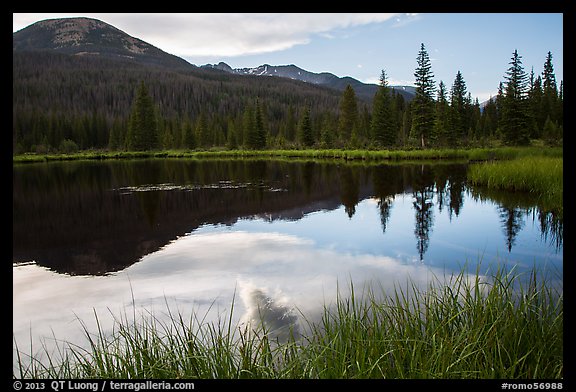
The West side, consisting of the Kawuneeche Valley, lacks the spectacular views found in other portions of the park. I found instead a beautiful valley with abundant wildlife including moose and elk, and only few other visitors. I photographed mostly near a beaver pond to which I returned for sunrise. Although it was summer in a very popular national park, the campground was not filled-up by late afternoon.
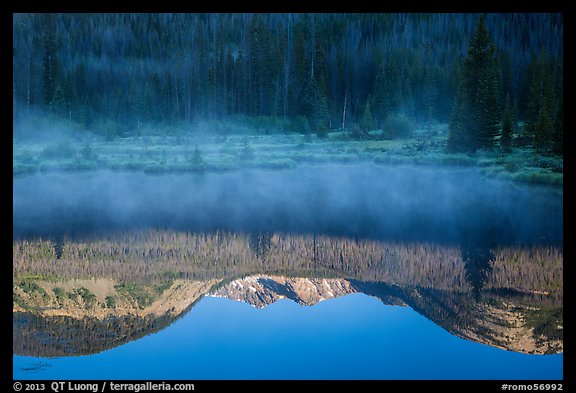
After traveling to Badlands, Wind Cave, Theodore Roosevelt National Parks, I returned to Rocky Mountain for my last morning of photography. Back at Estes Park at 9pm, after an afternoon stop at Fort Laramie, I was looking at a short night of sleep. For my last morning in the Rockies, I was going to photograph the sunrise at Chasm Lake, accessed from CO 7 on the East side of the Park. Sunrise in early July takes place at about 5:30am. The trail to Chasm Lake is only 4.2 miles one-way, however it starts at 9,400 feet and gains 2,400 feet. Since I planned to be there before pre-dawn, I started to hike at 1:30am. I had read on websites that because the first 3.25 miles of this trail is shared by Longs Peak hikers, you’re likely to encounter heavy crowds, no matter what time you start out. However, I did not see anybody until well after sunrise.
I easily followed the well-used trail in the dark, until the confusing signs at the Chasm Lake – East Longs Peak Trail junction, where the main trail was marked as “Boulder Field” and the Chasm Lake not at all. City lights shone in the distance, well below, but I couldn’t see the mountain terrain well in pitch darkness, so I had to pull out my compass and search-grade light. As the trail descended briefly towards a stream, when I saw the water, for a brief moment I thought I had arrived, before realizing that there wasn’t much water there. Just below the lake, the trail died into a jumble of class 3 rocks.
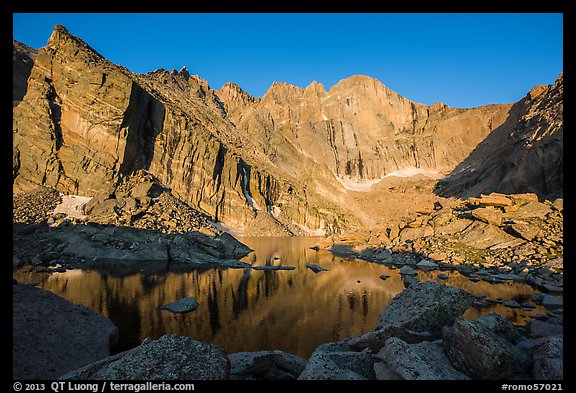
Since this short but steep scramble is typical of alpine lake outlets, I knew that after that last obstacle, I had arrived, however in the darkness, I could barely see the water. I set up my secondary tripod and camera at the lake’s edge for a night-to-day timelapse, framing the composition by trial and error. Take a picture, check the LCD, move the camera slightly, repeat. When it became light enough to see, I located a better viewpoint for stills, near a small inlet that added some interest to the lake’s surface. Further investigation of the lakeshore confirmed that this was the best I could find, but also turned out a bivy spot that I may use in the future, especially since the alpenglow that morning was weak because of a band of clouds on the eastern horizon.
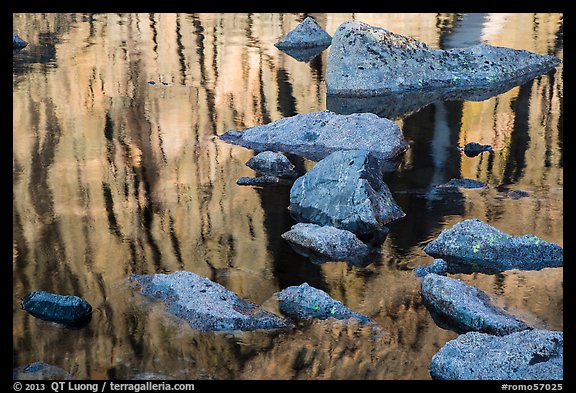
When I arrive at a new location, the first thing I do is try and capture the big picture, in this case the sheer Diamond face of the park’s highest summit, Longs Peaks (14,255 feet), reflected into Chasm Lake, nested in a cirque which was easily the most impressive location I have seen in Rocky Mountain National Park. This was what I came for, and I was not going to miss photographing it however how iconic it may be. To include the peak and its reflection, I was glad that I carried a 14-24 lens, using the wide end in some images. Having secured that image, I then proceeded to look for details large and small. The rocks in the water and those reflected are the same granite, separated by perspective and light – which alone created a warm/cold color contrast.
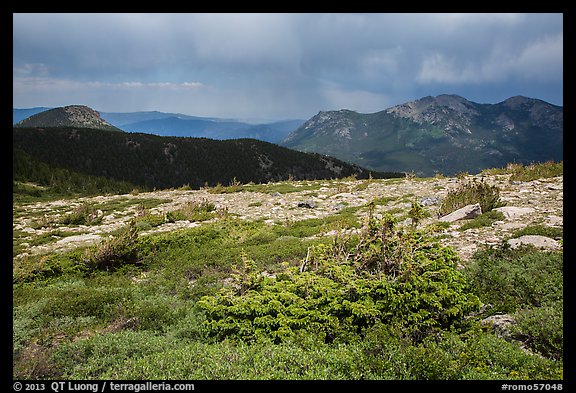
Early morning had been absolutely clear, without a single cloud in the sky, but as it happens almost daily in early summer, by mid-morning, the sky was already filled with dark clouds. By 11am, thunder could be heard and some rain fell. When I’ll hike the Longs Peak trail, I’ll make sure to get an early start. On non-loop hikes, I like going up in the dark not only for the efficiency (cooler temperatures, and no photography to distract you from the goal and make you arrive late), quiet and wonder, but also because during the descent I can discover the landscape as if I was there for the first time. The softer light was perfect for photographing the streams, which I did while keeping an eye on my watch.
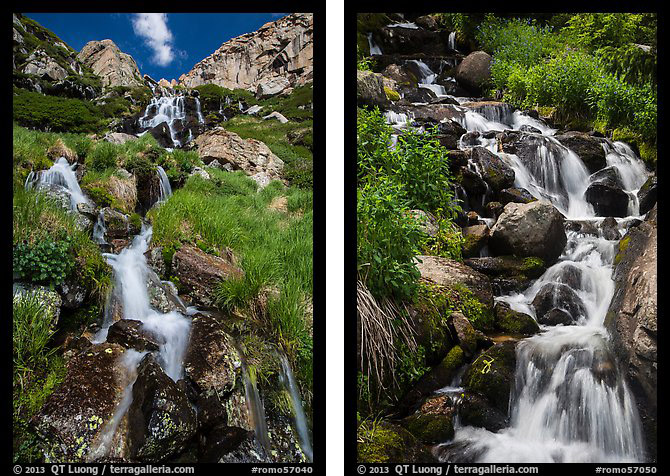
By the time I had photographed the lake to my heart’s content, a substantial number of fit-looking hikers had arrived. It was time to leave, especially since I was to catch the flight home this afternoon in the sprawling Denver International Airport. The trail gets enough visitors that the Park has installed an open-air toilet in the meadow below the lake, providing the best view I have had from a toilet seat. At the trailhead, I found the parking lot – which was empty when I had arrived, since no overnight camping is authorized – to be chock full, with overflow parking along the access road stretching several hundred yards.
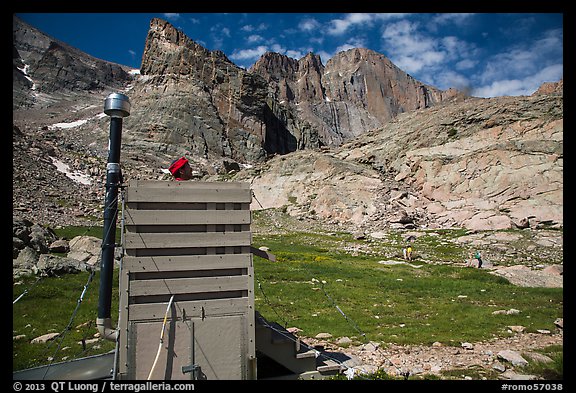
View more images from the Chasm Lake hike
View more images from Rocky Mountain National Park.

